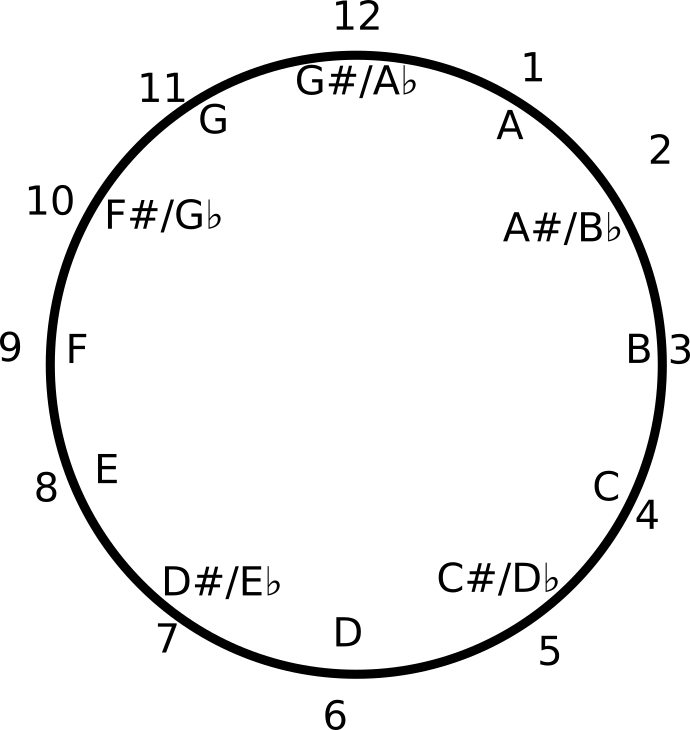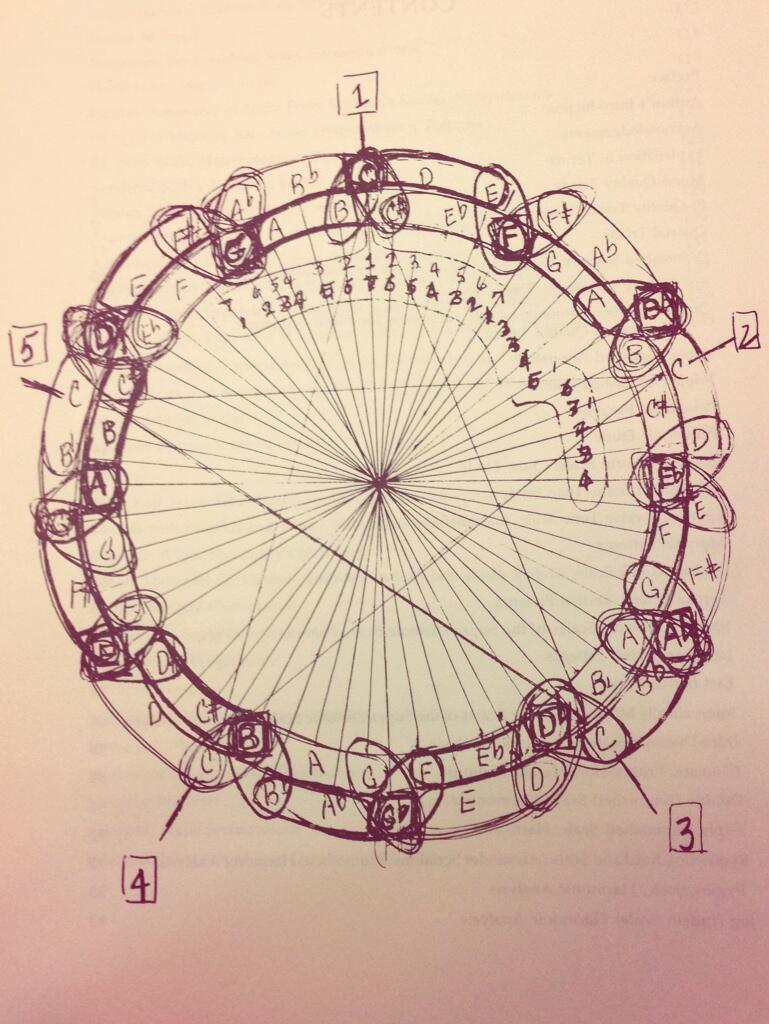As Jazz students, we are often exhorted to take a lesson and practice it in all 12 Keys. How many ways can we take a pattern through all 12 keys? Lets do some math.
Bottom Line Up Front: The easiest options are chromatic or cycle of fifths. Here’s how I justify that statement.
Lets map each note to a number, using an analog clock face positions of the numbers for each note, starting with A = 1.

The number 12 is very useful as a collection of things, because it can be evenly broken up in many ways:
- 2 Groups of 6
- 3 groups of 4
- 6 Groups of 2
- 4 groups of 3
However, this means that if we try to use one of those numbers as the basis for skipping notes, we will not hit every key. For example, take the “two groups of 6” option. That is what you get if you use the Whole tone scale. If You start at 1 (A) you will get 1,3,5,7,9,11 and then back to 1. To hit every key you would then have to do a half step or a step and a half to get the other 67 notes. Four groups of 3 is the augmented triads. 3 groups of 4 is the diminshed triads.
Add in the fact that 8 and 9 are multiples of 3 and 4 and that leaves use with a couple options:
- Plus or Minus 1
- Plus or Minus 5
- Plus or Minus 7
These map to the most common ways we are told to practice in all 12 keys: Chromatically or the cycle of fifths. It should be pretty obvious how plus 1 means a half step up; Start on A, then on A# etc. This is more common than Minus 1, or a half step down, but the effect is fairly similar.
If we start with the fact that 5 plus 7 = 12 it should not then be a surprise that +7 gets the same pattern as minus 5. 1 + 7 = 8. Going backwards around the clock is easiest if we add 12 before cross the 12 boundary. So 1 + 12 – 5 = 13 – 5 = 8.
So plus five is an interval of a Fourth ( A to D) as is minus 7.
Plus 7 is an interval of a fifth (A to E) as is minus 5.
So if we want an unbroken pattern that is going hit every key, those are our only options…or we can make an irregular pattern that adds up to 5 or 7. For example, +3 +2, which would be a minor third followed by a whole step. It can also be larger intervals: For example
- +6 + 1,or tritone, half step.
- +7 +6: perfect 5th.
- +6 +5 tritone perfect fourth
Those work because the forth/fifth shifts between the two whole tone scales.
This Means we could also do +4 +3: major third minor third. This Is Roughly based on a major triad; The final note of one is the Root of the next.
I suspect that it was pondering along these lines that lead to the Coltrane Circle.

